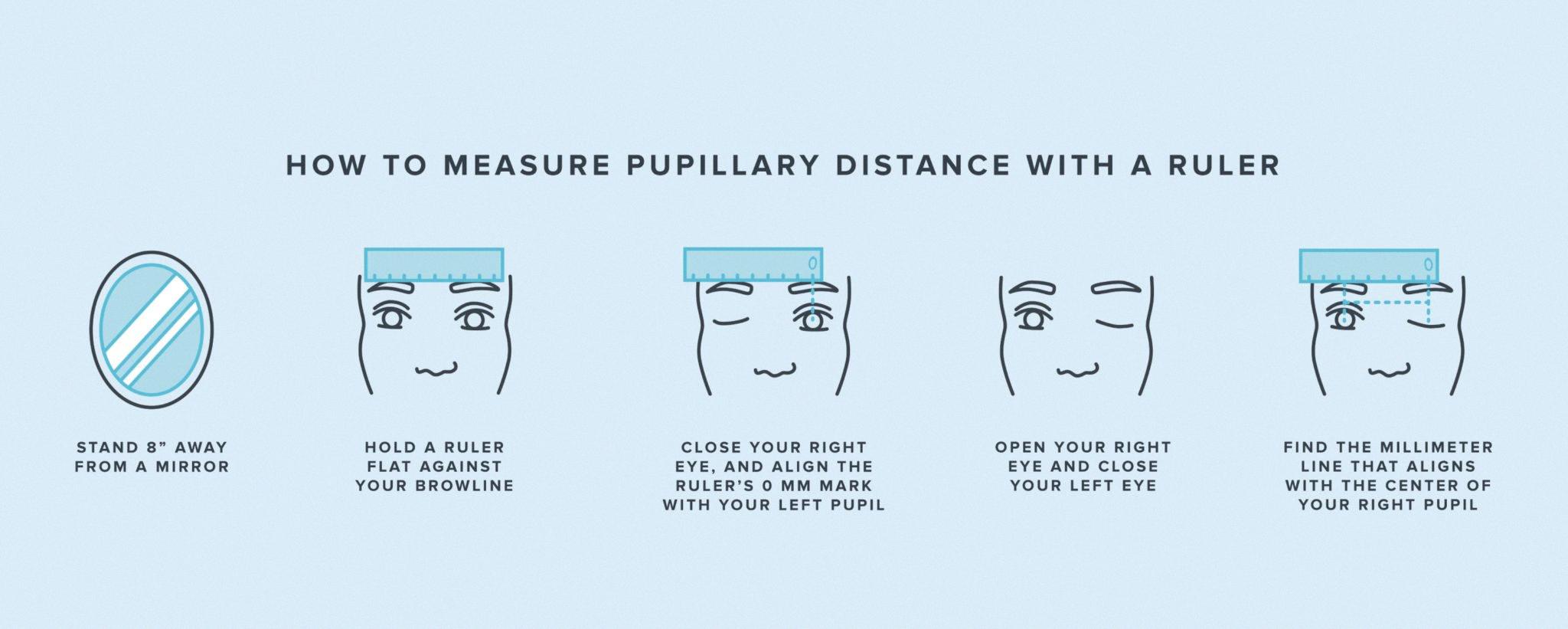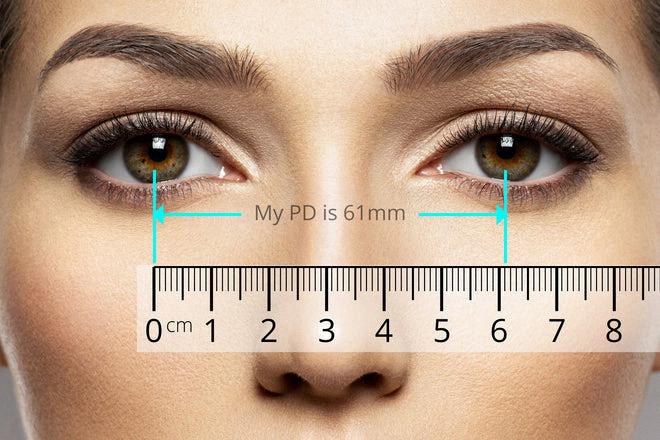Pupillary distance (PD) is the distance between the center of your pupils, which is an essential measurement for making eyeglasses. It determines where the optical center of the lens should be placed to ensure that you see clearly and comfortably through the lens. But, does pupillary distance change over time?
The short answer is yes, pupillary distance can change throughout your life. There are several factors that can influence your pupillary distance, including age, eye health, and certain medical conditions.
As you age, your muscles and tissues around your eyes may weaken or change, causing your eyes to shift slightly. This movement can affect your pupillary distance, causing it to increase or decrease over time. In general, younger people tend to have a smaller pupillary distance, while older individuals may have a wider measurement.
Eye health can also play a role in pupillary distance changes. If you have an eye condition that affects the alignment of your eyes, such as strabismus, your pupillary distance may not be consistent or may vary depending on which eye is being measured. Additionally, if you have had eye surgery or trauma, your pupillary distance may change due to changs in the structure of your eye.
Certain medical conditions, such as diabetes, can also impact your pupillary distance. Diabetes can lead to changes in the blood vessels in the eyes, which can cause the eyes to shift and affect the pupillary distance.
It is important to note that while pupillary distance can change over time, it typically only changes by a small amount. A difference of 1-2mm is considered normal, and most eyewear providers can accommodate this small variation. However, if you are experiencing significant changes in your pupillary distance or notice sudden changes in your vision, it is essential to schedule an eye exam with your optometrist.
Pupillary distance can change over time, but typically only by a small amount. Age, eye health, and certain medical conditions can all influence changes in pupillary distance. If you are experiencing changes in your vision or have concerns about your pupillary distance, it is always best to consult with your eye doctor.
The Importance of Accurate Pupillary Distance Measurement
The pupillary distance, which is the distance between the center of your pupils, is an important measurement when it comes to eyewear. However, it does not have to be 100% precise to be useful. While a more accurate measurement may proide a better fit for your glasses, your pupillary distance can tolerate a small error range. This is because the lenses in your glasses can be adjusted to compensate for small variations in your pupillary distance. However, if you are measuring your own pupillary distance, it is recommended that you take several attempts to ensure you get a fairly accurate measurement. This will help ensure that your glasses provide the best possible vision correction and comfort.

Source: warbyparker.com
Consequences of a 2mm PD Offset
If your pupillary distance (PD) is off by 2mm, it can cause discomfort and affect your vision with your eyeglasses. The reason for this is that your pupils tend to converge or diverge to the center of the lens. This means that if the center of the lens does not align with your pupils, you may experience eye strain, headaches, or blurred vision.
The impact of a 2mm difference in PD is more significant for people with higher prescriptions. This is because the higher the power of your prescription, the more your eyes rely on the correct alignment of the lens with your pupils to povide clear vision.
It is essential to have an accurate PD measurement when ordering glasses to ensure that the lens centers align with your pupils. If you are experiencing discomfort or vision problems with your current glasses, it is recommended to have your PD checked by an optician or optometrist. They can provide you with an accurate measurement and adjust your glasses accordingly to ensure optimal vision and comfort.
Effects of Changes in Pupillary Distance
Pupillary distance, or PD, can change due to a variety of factors. One of the main causes of PD changes is age-related presbyopia, which is a natural decline in the ability of the eyes to focus on nearby objects that occurs as we get older. This can cause the muscles that control the size of the pupils to weaken, leading to a decrease in PD.
Other factors that can affect PD include changes in overall body size or weight, as well as certin medical conditions such as diabetes or glaucoma. Additionally, wearing incorrectly prescribed or poorly fitting glasses can cause eyestrain and headaches, which can sometimes lead to temporary changes in PD.
It’s important to note that while PD can change over time, it typically only does so gradually, so regular eye exams are important to ensure that your glasses prescriptions are up to date and accurately reflect any changes in your vision needs.
Understanding Why a PD Is Not Included on a Prescription
Your PD or pupillary distance is the measurement between the centers of your pupils, and it is an essential measurement that helps the optician to position the lenses correctly in your eyeglasses or contact lenses. However, not all eye doctors include the PD measurement on the prescription.
The reason for this is that some doctors prefer to leave the PD measurement to the discretion of the optician who will be fitting your eyewear. Opticians have specialized tools and techniques to measure your PD accurately, and they can adjust it based on the type of lenses and frames you choose. Therefore, omitting the PD on the prescription allows the optician to customize the measurement to your specific needs and preferences.
Also, some doctors may not have the necessary equipment to measure PD accurately or may not feel confident in ther ability to do so. In such cases, they may choose to leave the PD measurement to the optician who has the expertise and tools to measure it precisely.
Not having the PD measurement on your prescription is not uncommon and doesn’t necessarily mean that your doctor forgot to include it. It simply means that they prefer to leave the measurement to the optician, who will ensure that your eyewear fits you comfortably and provides optimal vision.
The Impact of an Incorrect Pupillary Distance Measurement
It is not okay if your pupillary distance is off. Pupillary distance is a crucial measurement that ensures your glasses prescription is accurate and your vision is clear. If your pupillary distance is incorrect, it can cause issues such as blurriness, headaches, and eye strain. These symptoms can lead to discomfort and make it challenging to perform daily activities such as reading, driving, or working on a computer. Therefore, it’s essential to ensure that your pupillary distance is accurately measured by your optician or using a reliable PD measurement tool. If you experience any symptoms, it’s crucial to consult with your eye doctor, who can perform a comprehensive eye exam and adjust your prescription accordingly.

Source: readingglasses.com
Why Optometrists Do Not Provide PD Measurements
Optometrists may not provide PD or pupillary distance measurements because they want to ensure that the glasses or contact lenses fit properly and provide the best vision correction for the patient. When you purchase glasses or contacts from an optometrist, they will take measurements to ensure the lenses are properly positioned in front of your eyes. However, if you have your PD measurement, you cold potentially order glasses online without the guidance of an optometrist. This could result in ill-fitting glasses or lenses that don’t provide the best vision correction. Additionally, PD measurements can be difficult to obtain accurately without specialized equipment, so optometrists may not feel comfortable providing them without an in-person examination.
The Importance of Pupillary Distance
Pupillary distance, also known as PD, is a crucial measurement in determining the accuracy of prescription eyeglasses or contact lenses. The distance between your eyes is unique to you, and it’s important to get an accurate measurement to ensure that the optical center of the lenses is aligned with your pupils. If the pupillary distance is incorrect, it can cuse visual discomfort, headaches, and eye strain. This is because the lenses won’t be properly centered on your eyes, which can result in distorted vision and difficulty focusing. Therefore, it’s essential to have your pupillary distance measured precisely by a qualified eye care professional to ensure the most effective and comfortable visual correction.
Conclusion
Pupillary distance is not a fixed measurement and can change over time due to various factors such as age, eye conditions, and even chages in prescription. It is essential to have an accurate pupillary distance measurement when purchasing eyeglasses or contact lenses to ensure proper vision and comfort. While the measurement does not need to be 100% precise, it is recommended to take multiple measurements to get a fairly accurate result. Even a small difference in pupillary distance can affect the way glasses feel and function. However, for those with progressive lenses, only the distance PD is necessary as standard adjustments are made to accommodate for reading or computer vision. understanding the importance of pupillary distance and how it can change is crucial in maintaining optimal eye health and vision.
